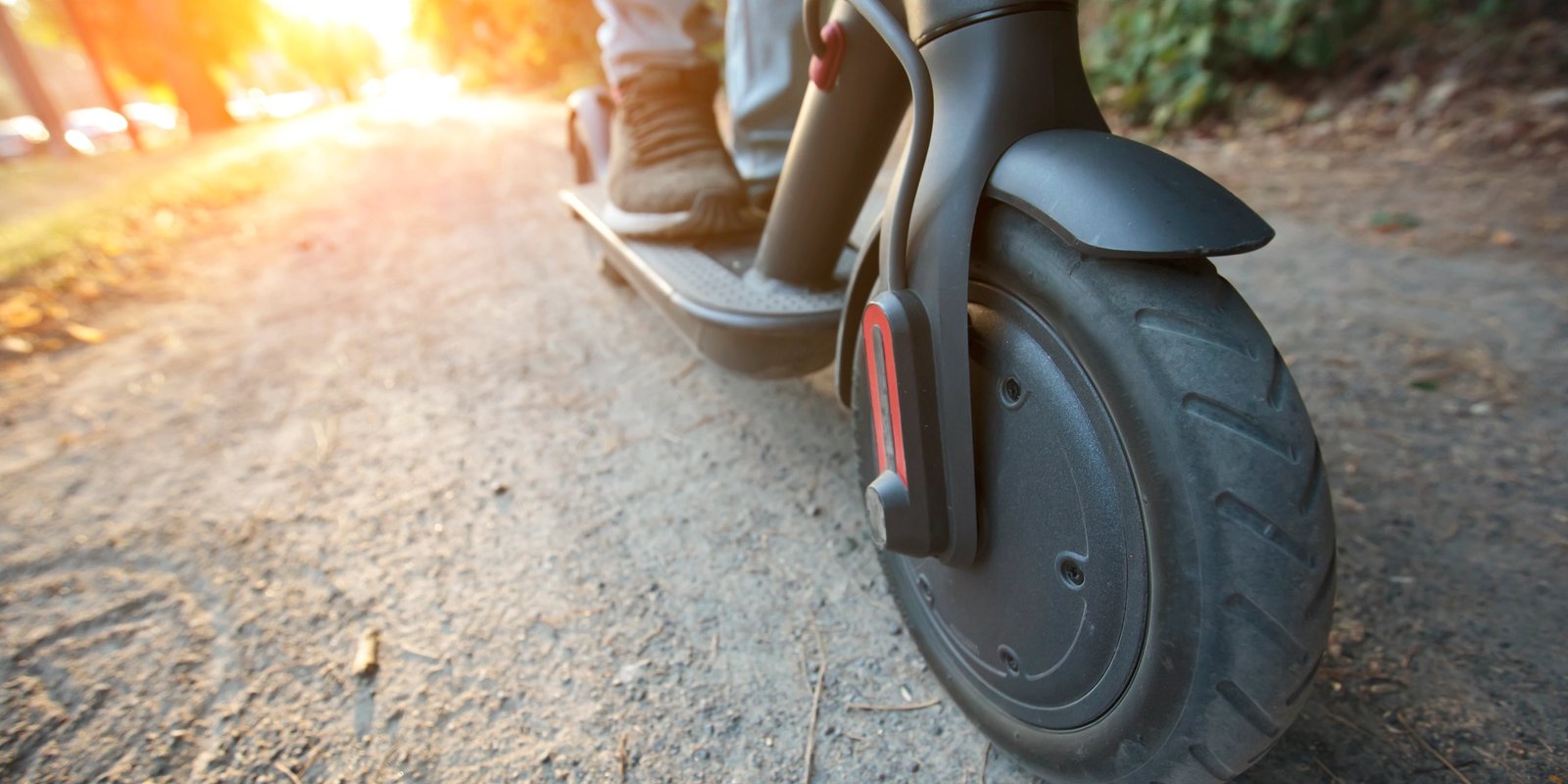Electric scooter tire pressure
Tires are one of the most important components of any scooter, so finding out what electric scooter tire pressure you need to maintain on your ride is essential.
Not only do the tires play a part in determining the performance of your electric vehicle, but they can also influence the safety of your ride, so it's really important to make sure that they're always inflated properly.
Knowing how much air is too much or too little to put in your tires is essential for electric scooter riders who have inflatable tires. They need to be able to grip the road for smooth rides and solid braking, and they also need to be at the correct tire pressure to avoid the risk of either a flat tire or blow outs.
Having optimal tire pressure will mean that you have a smoother riding experience, will have more control of the vehicle, and will be able to travel at higher speeds for longer periods.
Keep reading if you want to learn some tips on choosing the right pressure for your electric scooter tires and how to prevent flats.
Why do electric scooter tires lose air?
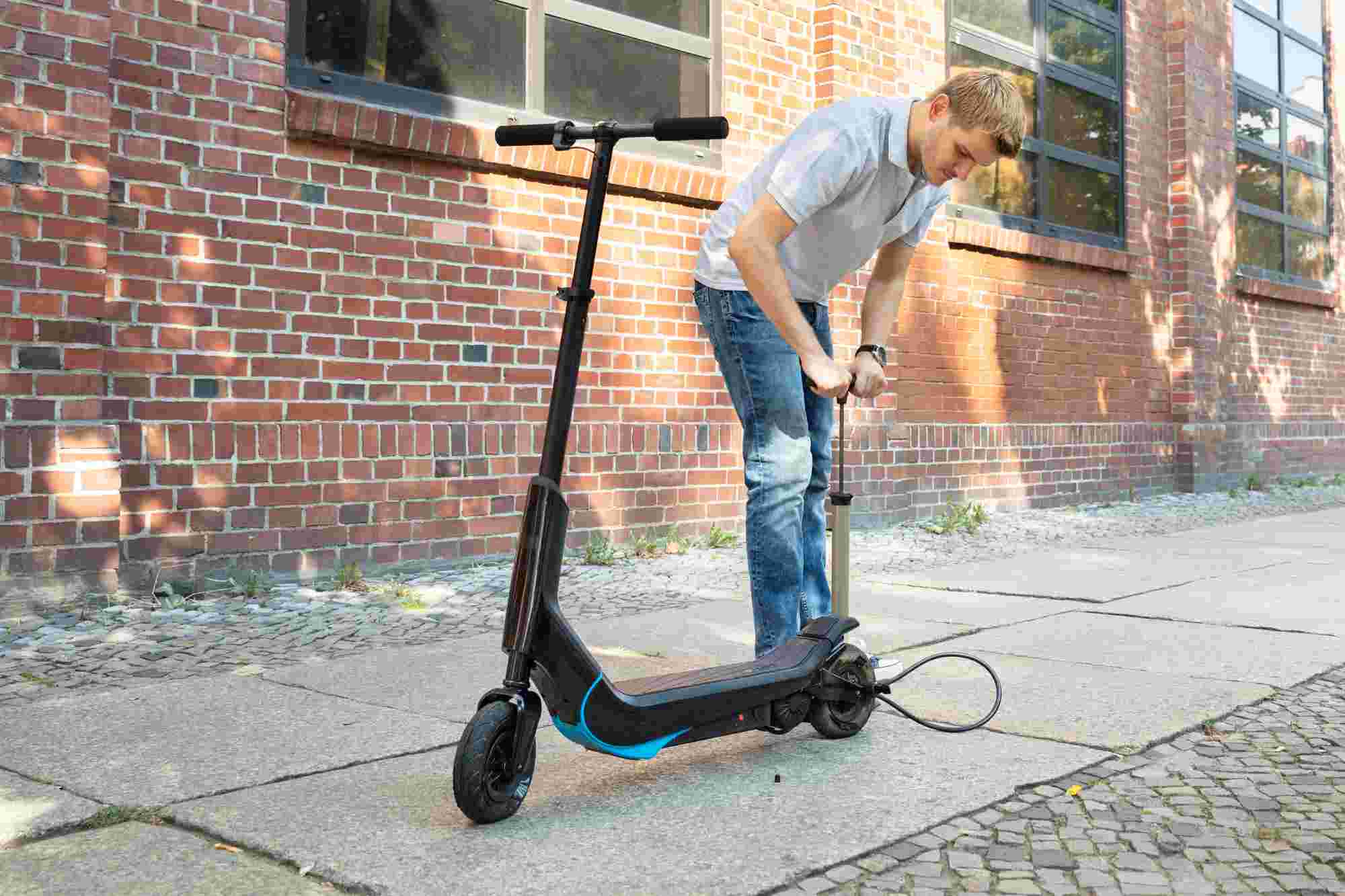
When your electric scooter tire loses air, it's more than just inconvenient, as a flat tire can cause damage to your scooter and make it unsafe to ride. Luckily, even though there are several reasons why an electric scooter tire could lose air, they're all relatively easy to fix.
Tire punctures
The most common reason why a tire loses air is if it has a puncture, and most of the time these are tiny and hard to see with the naked eye. If a nail, piece of glass, or any other sharp object went through your scooter's tire, it could cause slow, steady leaks that will eventually lead to a flat.
Improper inflation
Another common reason for a flat is improper inflation. Electric scooters have tires that need to be inflated to the correct pressure — usually around 50 PSI (pounds per square inch). You can find this information in your user manual, or sometimes on the side of the tire itself.
If you don't know how much pressure your tire needs and inflate it too much or too little, this can lead to punctures as well as ineffective braking, especially when riding on rough surfaces like gravel roads or dirt trails.
Leaky valves
Leaky valves are another common problem with electric scooters that leads to losing air in their tires. The valve stem is the part that connects the inner tube of your tire with the outside world so you can inflate them with air when necessary.
If there's any sort of defect in this stem, whether it's bent out of shape, has broken threads or something else, then the air will leak out and your tire will lose pressure.
First remove the valve cap, and inspect the valve itself. If you notice any of these problems, it's a good idea to take your scooter into an authorized dealer for repairs or replacement.
Why does tire pressure matter?
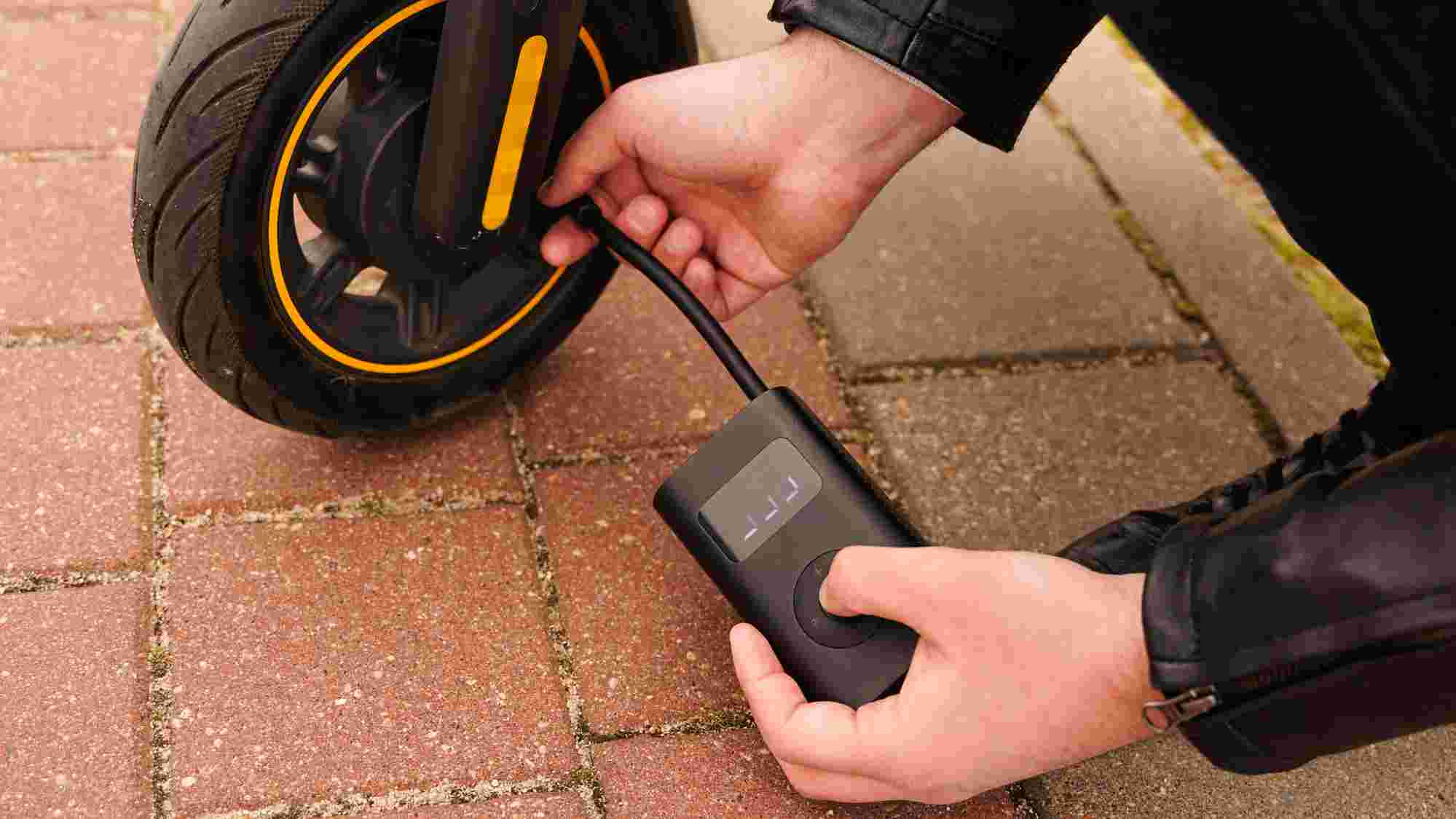
Tire pressure affects many aspects of how well your electric scooter performs including how far it can travel, how fast it goes, how it handles, and how comfortable it feels to ride.
The most obvious way that it affects your ride is speed, and an electric scooter with tires that are not properly inflated will feel sluggish and difficult to maneuver, seriously impacting the ride quality.
On the other hand, if you go over the recommended tire pressure, you might cause the tire to explode if it impacts something on the road like a curb, which is also known as a blow out.
It isn't just speed that's affected though, as e-scooter handling and braking are also impacted by the vehicle's tire pressure, especially because the wheels are so small.
High-pressure tires tend to be stiffer and provide more stopping power than low-pressure tires do. However, this comes at the cost of higher rolling resistance, which makes them slower to accelerate from a stop and more difficult to turn sharply at high speeds because they have less "give" when cornering or when the rider is braking hard with them.
The chance of getting a puncture increases when the tire is under-inflated too, because the inner tube can pinch even without being punctured by an external pressure.
What is the ideal pressure for an electric scooter tire?
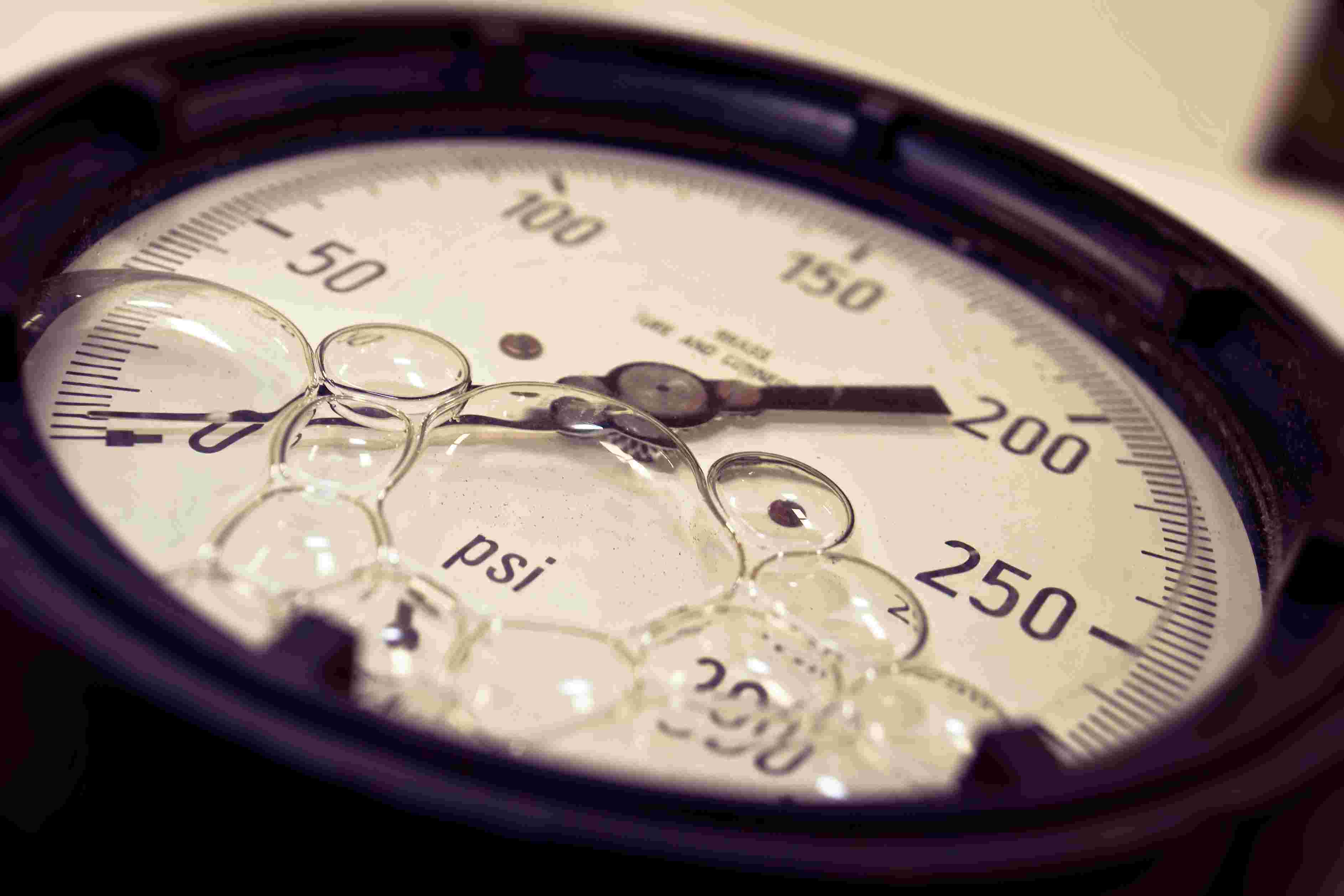
This question depends entirely on your electric scooter make and model, and there's no one-size-fits-all answer. A lighter, quicker commuter scooter will likely have a higher recommended tire pressure, whilst a bigger off-road vehicle might need a lower pressure.
On electric scooters, both the front and rear tires will usually be required to be at near enough the same exact tire pressure for a balanced and comfortable ride.
Most electric scooters bought from reputable manufacturers will come with a user manual that explains the desired range for tire pressure on the vehicle. If you don't have access to the user manual, inspect the external side of the tire itself, and it should be written there.
Usually, a guideline is presented in which the tire pressures are expected to stay inside of, and we'll cover how to use a tire pressure gauge to make sure you're in the sweet spot later in the article.
Bear in mind the rider's weight when filling the tires up with air, as heavier riders should probably aim for the lower end of the recommended pressure range, whilst lighter riders will want to have higher pressure and go right up to the top of the pressure range.
Air pocket and honeycomb electric scooter tires
Some electric scooter tires have air pockets built into them rather than an inner tube, and this technology acts as a bit of a cheat code for wheel and tire maintenance.
Scooter tires with this design are also sometimes referred to as honeycomb tires, there's no difference between these terms (just in case you're comparing models and are confused).
These tires have the same level of traction control as conventional tires, require no maintenance to maintain pressure, don't affect the achievable speed, and make the ride more comfortable, which is why we use them on allUnagi scooters as standard.
Air pocket tires are essentially solid rubber with pockets of air built into them, and they need to be used on both the front wheel and rear wheel to be effective.
In terms of tire size, there's no difference to standard air-filled inner tube tires, but despite this they generally offer better suspension. This is because the pockets of air act to take the impact of bumps in the road, much the same as Air Max trainers with an air built-in.
Air pocket tires are essentially hard rubber solid tires so they don't need to be blown up in the old-school way and therefore have no recommended psi to adhere to.
How to maintain the right tire pressure in your electric scooter
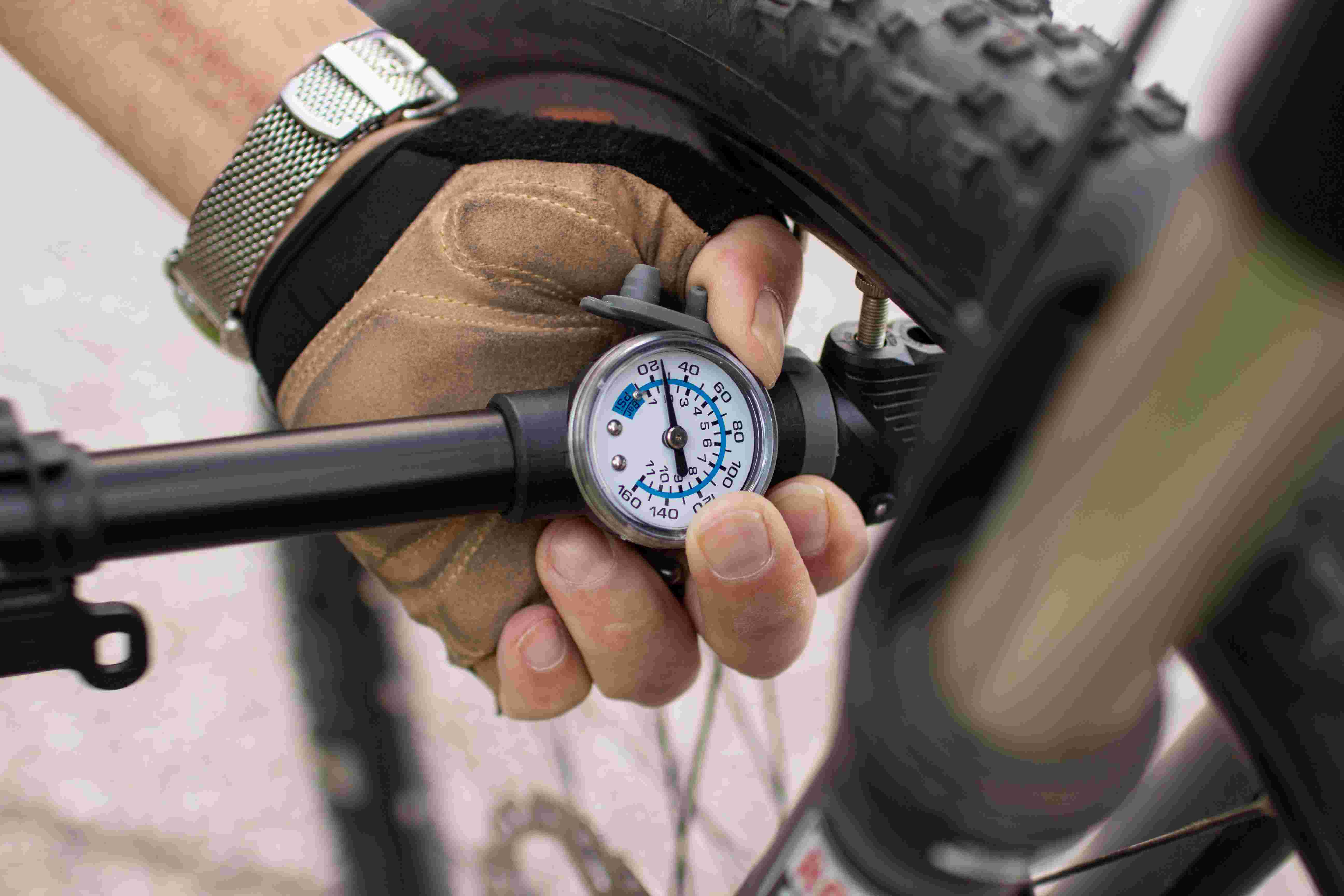
So whilst it's straightforward enough to find out the tyre pressures your scooter would work best on, it's another ball park maintaining that PSI for long periods. Read on to find out the best way to maintain the right tire pressure on your electric scooter.
Best practice is to check the tire pressure before each ride if possible, especially if you're planning on traveling a long distance, least of all because it improves your efficiency.
If once a day is too much to adhere to (commuters, we hear you), then at least try to check once a week. One of the best methods for doing that is to use a digital tire gauge to check your tire pressure, which can be bought seperately or built-in to a pump or air compressor.
Start by filling up the tires with air using either your air compressor with a gauge attached or by filling them up with air at a gas station if possible because you'll get more consistent results using this method versus using a manual pump.
Once they’re full, check the gauge and make sure the number on it corresponds to your e-scooter’s recommended tire pressure and if it doesn’t, or the tires are showing different values, make adjustments accordingly.
What happens if you over-inflate your tires?
Over-inflating your tires can lead to a number of problems, one of which is reducing the amount of traction you get from your tires. When your tires are over-inflated, they don't flex as much and that means there's less surface area touching the ground.
This means less friction between your tire and the road, which in turn means less grip, so keeping them at the right pressure essentially means better grip.
Over-inflated tires also wear out faster because they are under more stress than necessary for normal rides around town. Finally, over-inflated tires can be dangerous because they're more likely to blow out at higher speeds than normal when riding on rough terrain or hitting bumps in the road.
When you hit a pothole or bump in the road, your tire will hit that obstacle with more force if it's over inflated, and won't have as much "give" in it to absorb the blow.
What happens if you under-inflate your tires?
Under-inflating your electric scooter tires can be just as dangerous as over-inflating, if not more. There are specific electric scooters, bicycles and even cars that benefit from having a low PSI, but this will be specified as that vehicle's recommended pressure, so don't be tempted to drop it down because you've heard or seen someone else doing it.
If you are riding on under-inflated tires, the first issue you'll probably notice is that the tires will wear out faster because they have to work harder to move the scooter forward. This can lead to premature tire failure and a subsequent increase in maintenance costs.
Another problem with under-inflated tires is that they make it more difficult for the rider to control their scooter. Under-inflated tires create a bumpy ride, which can make it difficult for riders to maneuver their vehicle as easily as they would like, essentially allowing less control.
Finally, if the tires are too low then they may eventually become completely flat due to punctures caused by sharp objects such as glass or other debris on the road or sidewalk, as the tire will be less able to deflect them.
Can you ride an e-scooter with flat tires?

It's a question that's been asked time and time again, whether or not you ride an e-scooter with flat tires? The answer is yes, you can, but it's not a great idea unless it's your only option.
Riding on flat tires is dangerous, they are not designed to be ridden on this way, so they will not grip the road or slow you down, which could make you fall off. Instead, they will simply slide along the ground like a piece of cardboard and leave you with serious injuries or worse.
However, if your electric scooter tire pressure is going down really slowly and it's only going down very slowly, you could choose to slowly travel with some careful driving in order to get home or to a maintenance shop, but you will be at a risk of damaging the wheels, in particular the wheel rim..
We don't condone doing this as it can be quite dangerous, and recommend not riding your scooter until you regain a higher tire pressure. If your scooter wheels come with honeycomb tires like theUnagi Model One, you won't have to worry about this happening to you.
Does tire pressure matter for foldable e-scooters?
Foldable e-scooters are becoming more and more popular due to their lightweight design and ease with which you can carry them around.
Unless you have air pocket tires, your electric scooter tire pressure will matter regardless of the design of the scooter. Whether it's foldable or not, all that matters is the actual tire itself, and making sure that the tire pressure is right to get the right electric scooter range.
Not sure about what tires are right for you?
If you're unsure about which tires to go for, how it will affect each electric scooter's range, or about keeping on top of the recommended tire pressures, you could try out the latest Unagi model for size.
The Unagi all-access program means that for just $49, you can try out the latest tire technology and see if they work for you, fully insured, with a no-questions-asked returns process if you find the ride comfort isn't up to scratch.

